Some of my own experiences competing in the Paralympics can be read
here.
From the NY Times:
"May 17, 2008
Olympic Dream Stays Alive, on Synthetic Legs
By JOSHUA ROBINSON and ALAN SCHWARZ
When an international court ruled Friday that a double-amputee sprinter from South Africa was eligible to compete in this summer’s Olympic Games in Beijing, the stage was set for disabled athletes to meet their own trailblazer.

The watershed ruling made the runner, Oscar Pistorius, the first amputee to successfully challenge the notion that his carbon-fiber prosthetics gave him an unfair advantage and assured his right to race against able-bodied athletes in the Olympics, should he qualify. Previously barred from competing in such races by track and field’s world governing body, Pistorius will continue to stoke the debate over the competitive issues created by evolving technology in sports.
The ruling’s direct impact on disabled athletes could be limited, in part because Pistorius, 21, still must post a time fast enough to qualify for the Games. Yet his victory Friday in the Court of Arbitration for Sport sent a message that could long resonate among Paralympians.
“I am extremely shocked that the C.A.S. has made that decision,” said Marlon Shirley, a single amputee who holds world records in the 100 meters, the 200 meters and the long jump in his Paralympic class. “It’s a very brave decision and one that’s definitely going to revolutionize sports.”
Ann Cody, a seven-time Paralympic medalist for the United States in basketball and track and field who sits on the governing board of the International Paralympic Committee, added: “It sends a message. People with disabilities can see people like them compete, and they’ll connect. They’ll say, ‘Maybe I can do that, too.’ ”
In overturning a ban imposed by the International Association of Athletics Federations, track and field’s governing body, the court deemed that there was not enough evidence to prove that Pistorius’s flexible j-shaped blades, attached below his knees, gave him an advantage.
“It’s not just about me,” Pistorius said in a telephone interview from Milan. “It’s about the extra opportunity for amputee athletes.”
Pistorius must meet the qualifying standard of 45.55 seconds in the 400 meters to gain an automatic berth in Beijing (or 45.95 seconds for a provisional spot); his current personal best is 46.33, according to his coach, Ampie Louw. With 64 days left, he is in a race to race.
Several Paralympic athletes and officials said that the court’s ruling would probably not affect many athletes, at least immediately. A large portion of athletes in the Paralympic Games, which take place two weeks after the Olympics, compete in wheelchairs; those who do not rarely reach the elite levels that Pistorius has. And the wording of the ruling appeared to caution against extrapolation, clearly stating that it “has absolutely no application to any other athlete, or other type of prosthetic limb. Each case must be considered by the I.A.A.F. on its own merits.”
“I knew they would have to do it somehow to protect themselves,” said Brian Frasure, a single amputee who will try out for his fourth United States Paralympic team in June. Frasure also works for Ossur, the company that designed and manufactured the Cheetah Flex-Foot, the prosthetics that Pistorius and many other athletes use.
“In the world of prosthetics, with so many variables, they need a stipulation for down the road, when we come to the day and age when bionics come to the fore,” Frasure said. “If they say it’s O.K. for all amputees to compete in the Olympics, they would be setting themselves up for even more controversy, more than Oscar dealt with, in the future.”
The I.A.A.F. thought it had made that stipulation when it barred Pistorius in January, despite clearing him to compete with able-bodied athletes last spring; he ran at international meets in Rome and Sheffield, England.
Disabled athletes have competed in the Olympics before — for example, the American Marla Runyan, who is legally blind, made the final of the 1,500 meters at the 2000 Sydney Games. Natalie Du Toit, whose left leg was amputated above the knee seven years ago, will swim for South Africa in Beijing.
But very few have raised the issue of whether their disability, or their compensation for a disability, presents an advantage. One was Neroli Fairhall, a paraplegic archer from New Zealand, who competed in the 1984 Olympics while in her wheelchair; there was some question as to whether the chair provided her better stability than archers standing on legs, but she was allowed to compete.
Pistorius was born without the fibula in his lower legs and with defects in his feet, and his legs were amputated below the knee when he was 11 months old. He went on to set Paralympic world records in the 100, 200, and 400 meters, but did not draw attention until he started competing with able-bodied athletes in South Africa in 2004.
So last November, the track and field governing body’s cooperation with Pistorius was uncharted territory. The I.A.A.F. sponsored three days of testing on Pistorius, who gave his consent, in Cologne, Germany, under the supervision of Peter Brüggemann, a professor at the German Sport University.
Brüggemann found that the Cheetah prosthetics were more efficient than a human ankle. He also found that they could return energy in maximum speed sprinting and that Pistorius was able to keep up with a few able-bodied sprinters while expending about 25 percent less energy.
Pistorius’s lawyers, however, argued that the results of the study did not provide enough evidence to make a decision, and they lodged an appeal in February. Jeffrey Kessler, a lawyer with the New York-based firm Dewey & LeBoeuf, who agreed to take the case on a pro bono basis, led Pistorius’s defense.
“The I.A.A.F. had not at all followed proper procedures in conducting any of its review,” Kessler said. “Many of its results were in many respects pre-ordained.”
To test how much mechanical energy a runner uses, researchers study forces on the ankle, knee and hip joints. They do this with video cameras to record the joints’ motions and plates along the running path that record the force on the joints. When the athlete’s foot, or prosthesis, touches a plate, it measures the forces in three directions: up and down, right and left, and front and back.
The measurements, combined with oxygen consumption, are a reliable indicator of the runner’s economy — and whether the prosthetics are providing an advantage, said Roger Enoka, a biomechanics researcher at the University of Colorado.
The researchers who examined Pistorius were instructed to study only his performance while running on a straightaway — when he was at his fastest. That approach was deemed unfair by the court. In its published opinion, the court censured the I.A.A.F. for its handling of the case, saying that from the outset, it had its mind made up.
“The manner in which the I.A.A.F. handled the situation of Mr. Pistorius in the period from July 2007 to January 2008 fell short of the high standards that the international sporting community is entitled to expect from a federation such as the I.A.A.F.,” the panel said.
In a public statement, however, the I.A.A.F. did not address any of the hearing’s specifics.
“The I.A.A.F. accepts the decision of C.A.S. and Oscar will be welcomed wherever he competes this summer,” the I.A.A.F. president Lamine Diack said. “He is an inspirational man and we look forward to admiring his achievements in the future.”
But Pistorius is not convinced that his future includes the 2008 Olympics on top of his competing in the Paralympic Games. Over the last five months, the time spent preparing an appeal and a court case has eaten away at his time on the track.
“It’s going to be very hard for me to make the Olympics now,” he said. “Even if I don’t, I want to compete at the world championships and in London in 2012.”
The cutoff date for Olympic qualification is July 20, and between now and then he hopes to race in three or four able-bodied events as well as at least five competitions against amputees to build up to his top speed.
If Pistorius does qualify, the International Olympic Committee said it would welcome him. “Oscar Pistorius is a determined and gutsy athlete who will now no doubt put all his energy into reaching the qualification standards for the Olympic Games,” the I.O.C. said in a statement.
And with the court’s decision effective as soon as it was delivered, Pistorius said he would resume training immediately. But he added that training was the furthest thing from his mind as he sat in Dewey & LeBoeuf’s Milan office, waiting for a fax from the court. “We were trying not to expect anything so as not to be disappointed,” he said.
But when a lawyer read him the decision, five months after he thought the I.A.A.F. had shattered his dreams of running in the Olympics, he wept.
“Most people would have quit after the I.A.A.F. said no,” said Shirley, the single-amputee Paralympian. “He kept fighting through. He’s been doing things on prosthetics that people haven’t thought about.”
Gina Kolata contributed reporting."

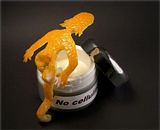
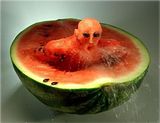
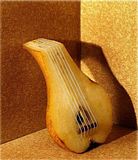

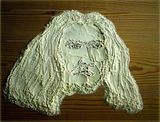


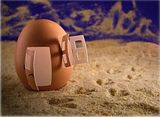
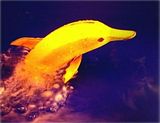
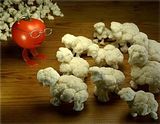
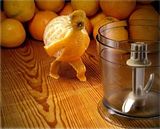





















 MSNBC.com
MSNBC.com